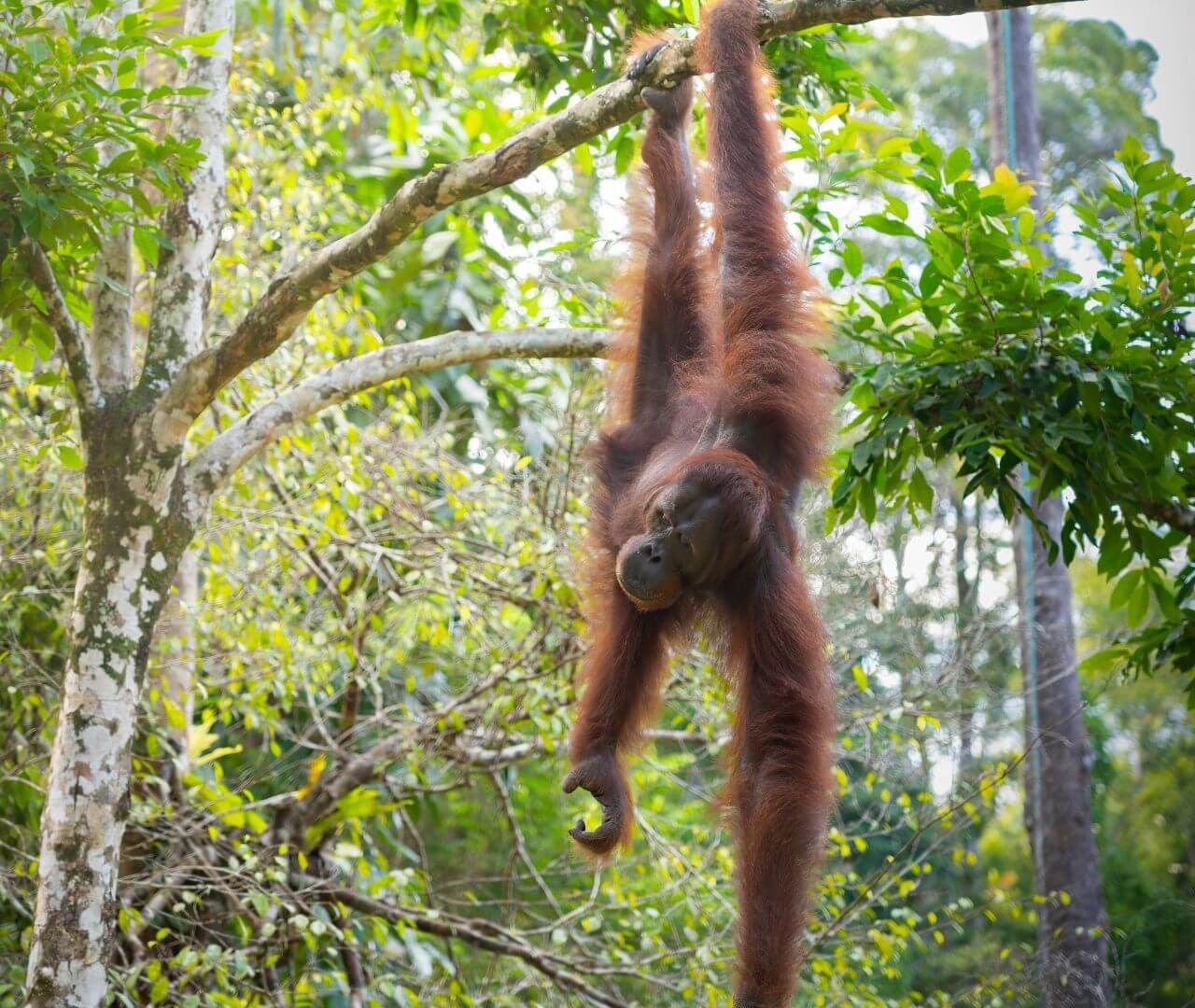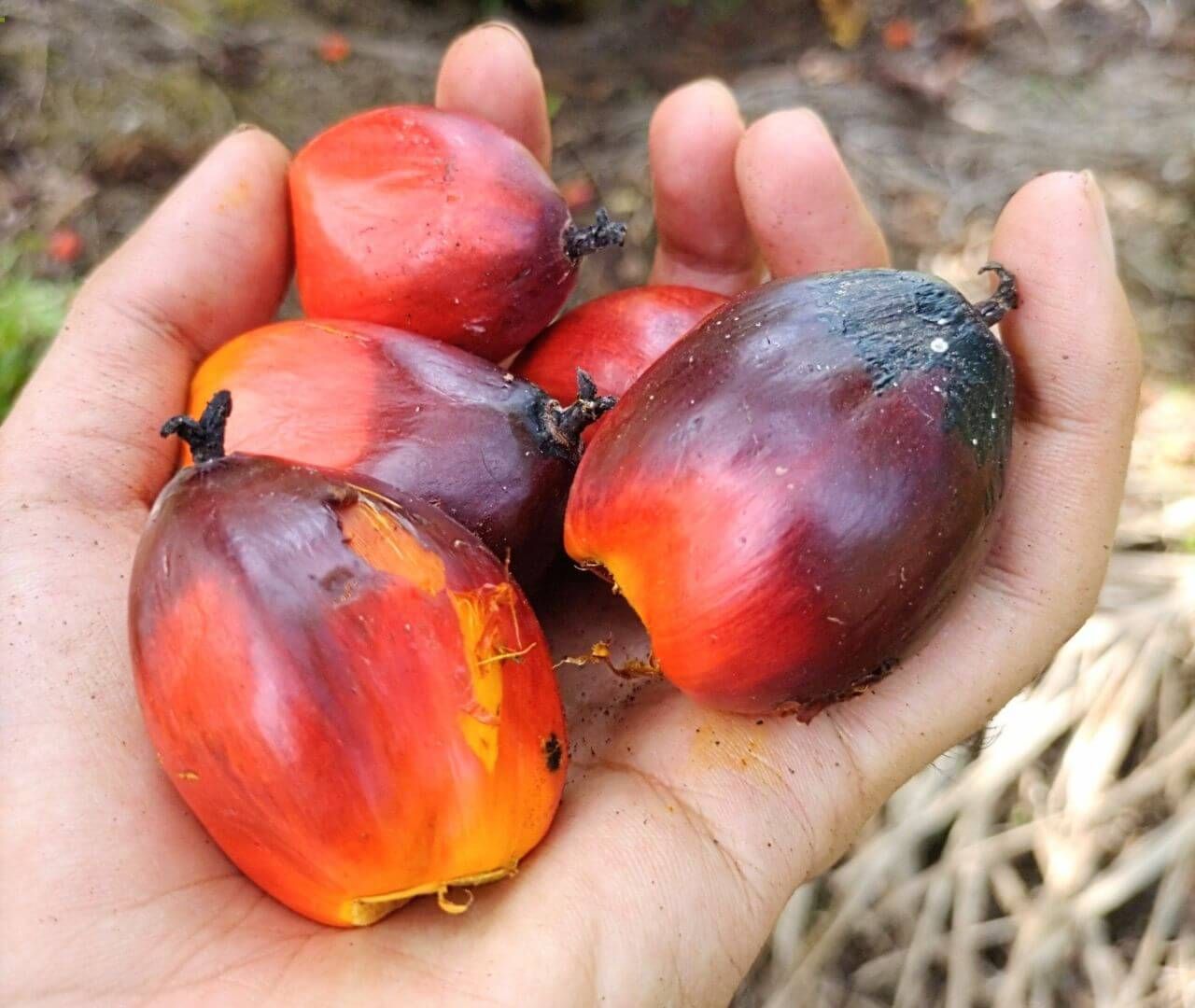Orangutans

Let's Learn About Orangutans
Word of the Week
Arboreal
Arboreal animals live primarily in the trees. Orangutans, spider monkeys, sloths, and tree snakes are all arboreal.
Orangutans have adaptations like long arms and hand-like feet that help them live in the tree-tops.
Fast Facts
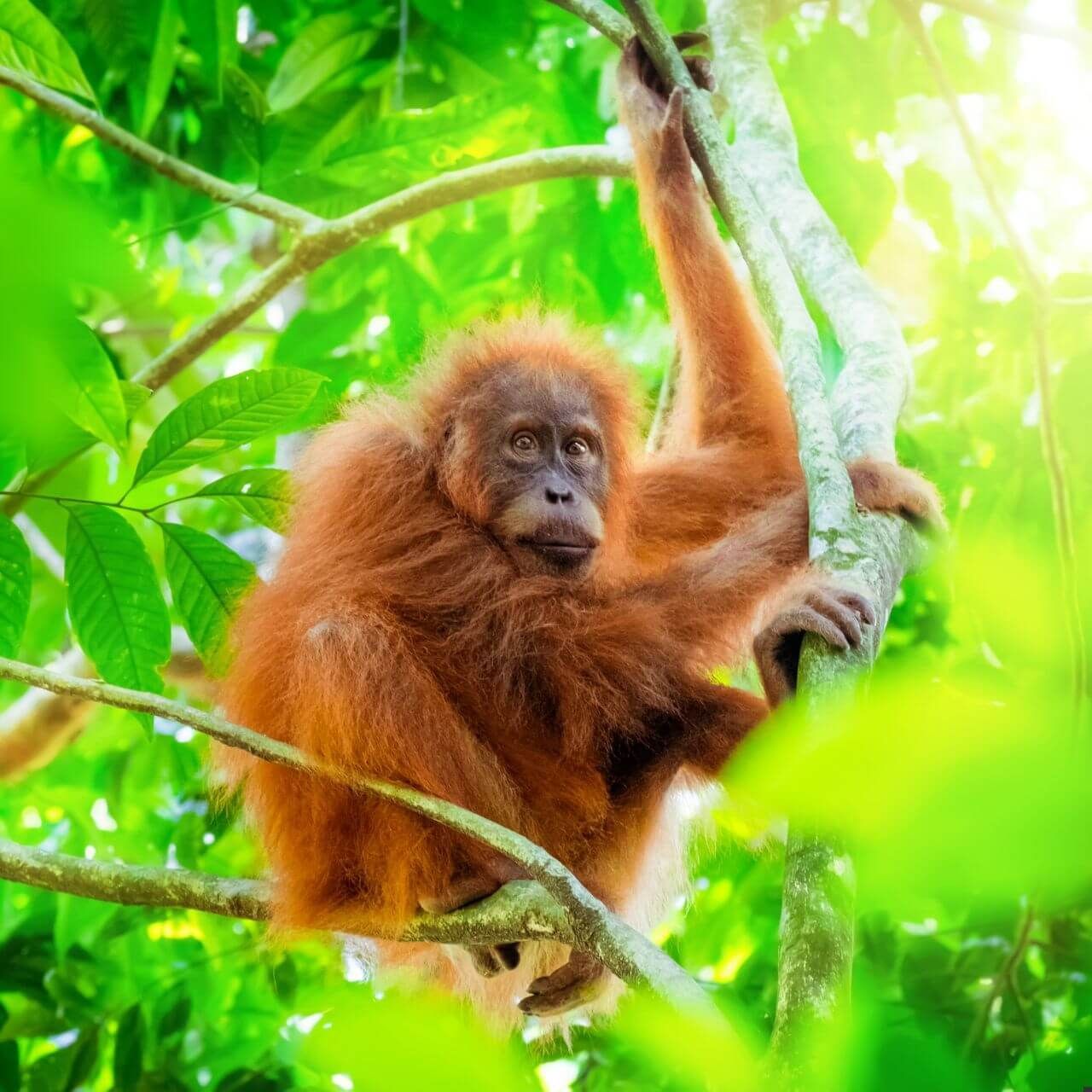
Where do orangutans live?
Orangutans live in on two islands, Borneo and Sumatra, located off of the coast of Southeast Asia.
Orangutans are found in tropical rainforests. They use the tree branches and vines to move around in the canopy.
What do orangutans eat?
Orangutans are frugivores, meaning they mostly eat fruit.
They feed heavily on figs, durian, and berries. Orangutans also eat leaves, bark, honey, eggs, and small animals.
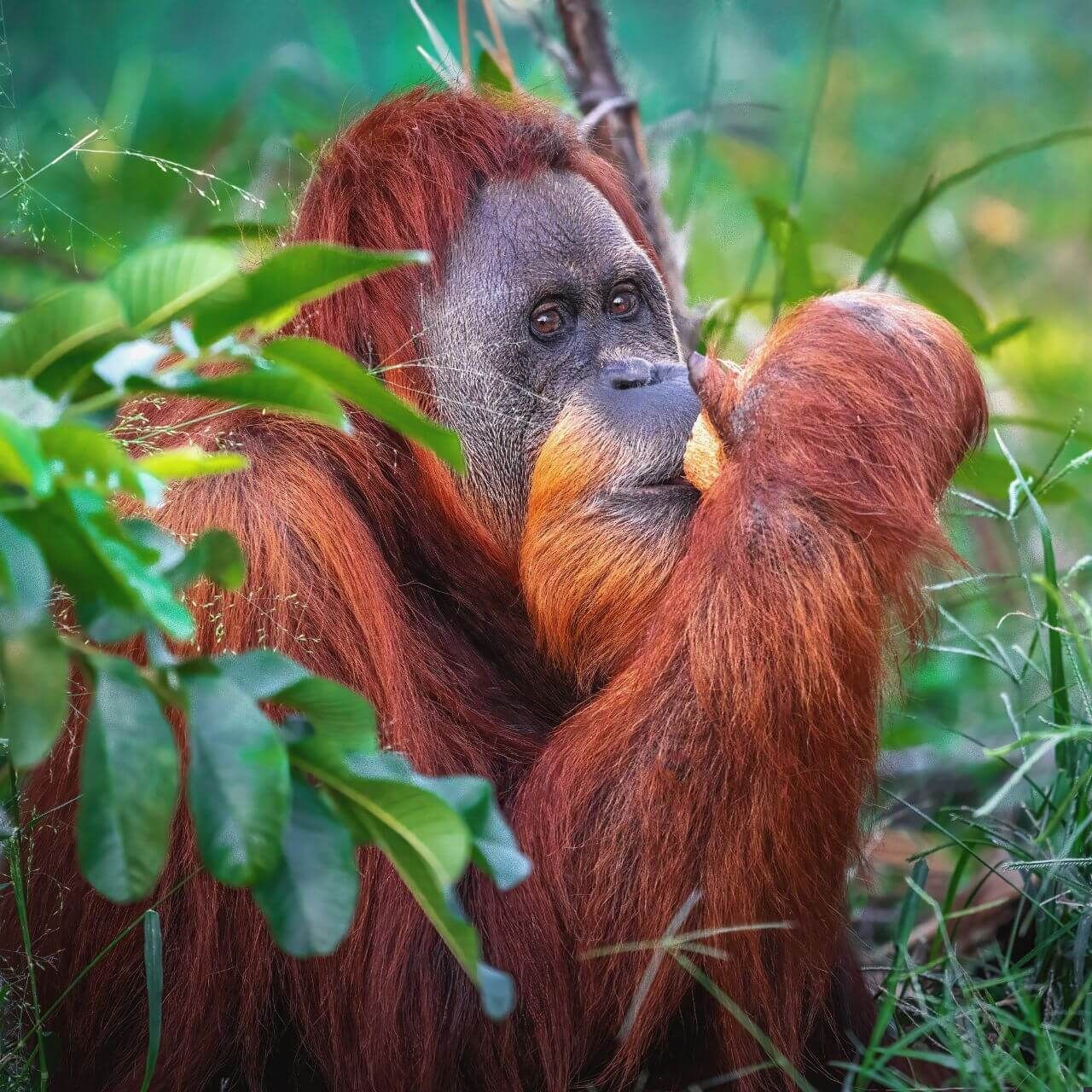
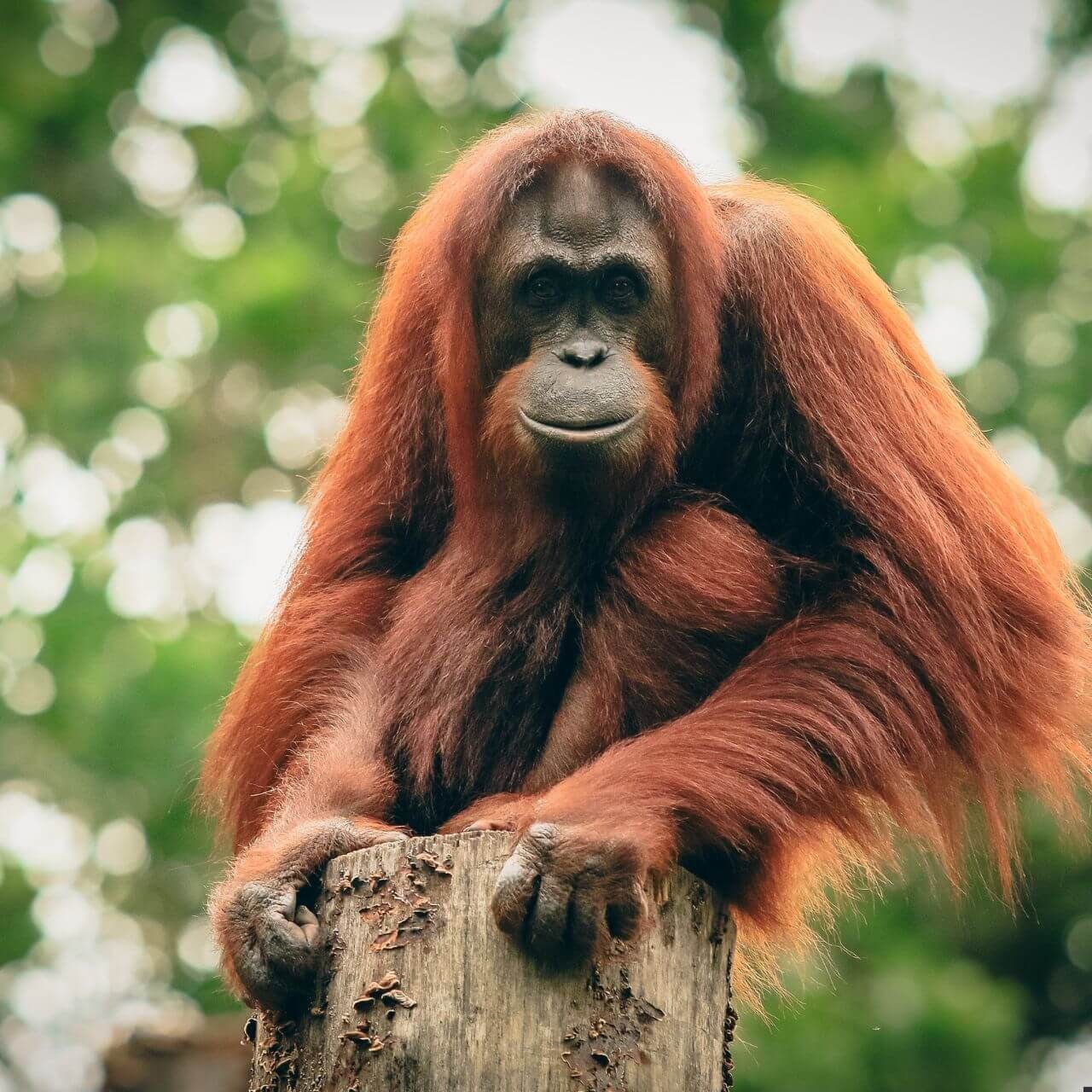
What traits do orangutans have?
Orangutans have many traits in common. They all...
- Have reddish-orange hair.
- Have hand-like feet with opposable thumbs.
- Have long, strong arms used for climbing.
- Are highly intelligent and commonly use tools.
- Are diurnal, meaning they are active during the daytime.
How many orangutans are there?
There are three species of orangutans.
Unfortunately, all three species are all critically endangered. The main threats that orangutans face is deforestation. Their rainforest home is cut down or burned to create space to grow oil palm trees. Orangutans are also hunted for their meat or poached to sell in the illegal wildlife trade.
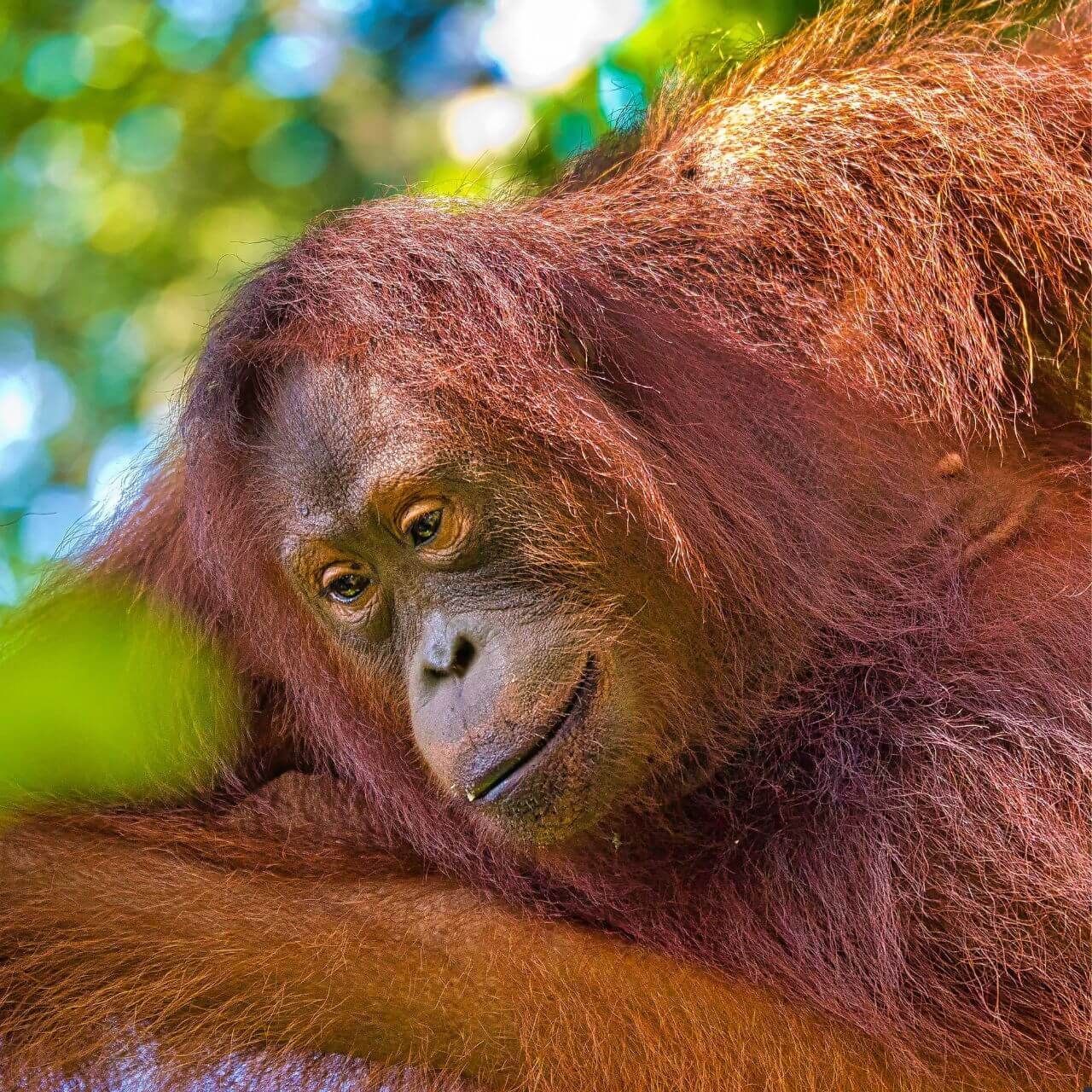
Species Spotlight
Tapanuli Orangutan
Pongo tapanuliensis
Most orangutans on the island of Sumatra live in the rainforest on the northern end of the island. However, a group of about 800 orangutans lives further south. They are completely separated from the rest of the orangutans.
It wasn't until 2017 that scientists completed a study on this small group. They found that the isolated group was actually a different species. They live in the Tapanuli region of Sumatra, so scientists named them the Tapanuli orangutans.
Scientists also discovered that Tapanuli orangutans are more closely related to Bornean orangutans. This was surprising because they live on different islands. Scientists hypothesize that the orangutans crossed between the two islands millions of years ago. During this time, the islands were connected by land. Today, the land bridges no longer exist. The orangutans cannot leave their islands, which causes threats to their survival.
All three species of orangutans are threatened by habitat loss. The rainforests they rely on for food and shelter are being destroyed. When the Tapanuli orangutan officially became a species, it also became the most endangered species of orangutan. Visit our Conservation Corner below to learn more about the threats to orangutans and how you can make a difference.
Conservation Corner
Threats in Borneo and Sumatra
The tropical islands of Borneo and Sumatra are home to amazing animals. Tigers, rhinos, elephants, bears, and orangutans all live in the rainforests there. However, these animals are in danger because their homes are being destroyed.
One main threat to Borneo and Sumatra's ecosystems is deforestation. Deforestation occurs when people clear or burn forests. Trees are cut down and sold for their wood. Forests are burned to clear space for cities, roads, and farms, especially palm oil plantations. Palm oil is a resource found in items we use every day, from granola bars to lotion. It is produced from the fruit of oil palm trees, one of the main crops grown in Borneo and Sumatra. In fact, about 45% of all palm oil is produced in Borneo.
When the forest is destroyed, animals lose food and shelter. It also becomes easier for poachers and hunters to reach protected areas as roads for loggers and farmers are built into the forest. Orangutans and other endangered animals are now more at risk of being hunted for meat or trophies, or being captured for the illegal wildlife trade.
Fortunately, you can help, even from the other side of the world. When shopping, look for logos that show a product was made with sustainable or recycled materials. Use apps like the Sustainable Palm Oil app when shopping to make protecting rainforests even easier. Every small choice adds up!
Outrageous Orangutan
Determine if each statement about orangutans is true or false.
Learn More!
Glossary
Adaptation
The process by which a species becomes more fit for its environment over the course of several generations. It is a result of natural selection.
Arboreal
Living in the trees.
Brachiation
A form of locomotion commonly used by primates involving swinging from tree branch to tree branch using their arms.
Camouflage
The ability for an organism to blend into their surroundings usually to hide from prey or predators.
Deforestation
The act of forests being cut down or burned to create room for human expansion.
Dominant
To be the most powerful animal in the group.
Flanges
The animal that feeds primarily on nectar from flowers.
Frugivore
An animal that primarily eats fruit.
Maturity
The stage of an animal's life when it has reached full adulthood and is capable of reproducing.
Offspring
The young of an animal as a result of reproduction.
Predator
An animal that hunts other animals for food.
Palm Oil
An oil from oil palm fruits used in processed food, cosmetics, and other commonly used items. Oil palm trees are often grown unsustainably and result in deforestation.
Rainforest
An ecosystem that receives a large amount of rain and has trees that form a closed canopy.
Seed Disperser
An animal that spreads seeds around the environment (often in their waste or attached to their fur/feathers).
Social
Living in a group.
Solitary
Living alone.
Species
A closely related group of animals with similar characteristics that are capable of reproducing (example: tigers).
Territorial
Referring to an animal that defends an area (its territory) from other members of its species.


